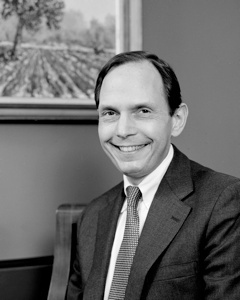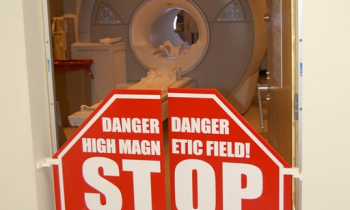Politicization of health care preventing real changes to out-of-control system
Over the last decade, the biggest driver of the high health care costs in the United States has been neither the aging of the population nor the large numbers of tests and treatments being prescribed.

Instead, new Johns Hopkins-led analysis described in the Nov. 13 issue of The Journal of the American Medical Association suggests it has been the increasing prices of drugs, medical devices and hospital costs — prices that doctors, patients and insurers rarely know until the money has been spent. The administrative costs alone — the costs associated with physicians and hospitals procuring payment from health insurers and individuals — are rising by 6 percent a year.
Study leader Hamilton Moses III, M.D., an adjunct professor of neurology at the Johns Hopkins University School of Medicine and former chief physician of The Johns Hopkins Hospital, says the paper outlines the “sobering reality” of the U.S. health care system in 2013 — one that is on an unsustainable path that needs righting, a task that seems ever bleaker in the current climate.
“Health care has become so politicized that rational discussions based on valid information have become impossible,” says Moses, who also runs Alerion, Inc., a Virginia-based consulting group. “But we are living in a time where we spend more money on health care than other developed countries and our outcomes are worse. Yet, we fail to understand the differences or to learn the others’ lessons.” Moses is expected to discuss the new research at a press conference at 9:30 a.m. EST on Nov. 12 at the National Press Club in Washington, D.C.
The JAMA analysis, conducted with colleagues at the Boston Consulting Group and the University of Rochester School of Medicine, attempts to dispel several common misconceptions informing the current health care debate. The researchers used publicly available information about who pays for and who supplies medical care.
While the average rate of growth has decreased steadily since the 1970s, Moses says the 18 percent of its gross domestic product (GDP) that the United States spends on health care is 50 to 60 percent higher than any other developed country. Life expectancy, which has been on the rise for a century, is now not growing as quickly in the United States as it is in the rest of the developed world, a shift that began in the 1980s, with the United States lagging by three years in both men and women. Though many policymakers point to the elderly as the biggest consumers of health care, it is actually those younger than 65 with chronic illnesses who account for two-thirds of expenditures.
Moreover, Moses says, patients are further removed than ever from the true cost of health care. Individuals’ out-of-pocket costs declined from 23 percent of the cost of their medical care in 1980 to 11 percent of the cost in 2011. Those costs have been shifted to employers and the federal government, whose share grew from 31 percent of costs to 42 percent over those same three decades. All of this despite the fact that the rate of growth in health care costs is not increasing as quickly as it has been.
Moses and his colleagues describe three major forces that will change health and medicine in the decade to come. First is consolidation and industrialization, with a smaller number of much larger insurance companies and hospital systems. “This will result in less choice of where people get care. And they will likely be asked to shift their allegiance to an institution, rather than have a single physician,” Moses says. The second is information technology, which holds great promise to coordinate care and improve quality but, despite large investments, has not yet delivered on the promise. Third is the patient acting as an informed consumer, gaining greater influence than today.
“Costs are completely invisible to you and to your doctor,” he says. “Unless the prices of services, of drugs, of devices are known, you cannot have any kind of effective market. Moreover, many prices are fixed by the federal government or negotiated with hospitals confidentially, further removing levers that can lower prices.”
Moses points out that the United States is also lagging behind the developed world in the proportion of primary care doctors, something that takes its toll not just in preventive medicine but in coordination of care once someone becomes sick. He says this comes through when, say, a person with diabetes or depression requires a joint replacement. These patients are much more likely to suffer complications, but few specialists are on the lookout for them. “Specialists can attend to one problem, but few can see the totality,” he says.
What is needed is an investment in people — in primary care doctors, in innovations that can streamline the process of care to improve outcomes. He says 4 percent of health care spending has gone to biomedical research into new technology (drugs and devices), while only 0.1 percent has gone to improving the process of care.
“Nearly every other industry has found a way to invest, reduce costs and improve outcomes,” he says. The airlines, for example, after deregulation in the ‘70s, built information systems that allowed them to save on fuel, streamline routes and cut the cost-per-mile in half. Thirty years later, more people fly, consumers pay “rock bottom” prices, safety is far greater — but flying can now be an unpleasant experience, he says.
Would people tolerate less choice, less freedom in their health care? Moses doubts the airline model is the answer, he says, but a discussion, based on valid and unbiased information, must begin to truly innovate to deliver greater value and lower cost. Thus far, he says, “the political process has failed us badly.”
“There is a risk that political squabbling will cause the country to miss a chance to achieve a more effective and efficient way to deliver care — one that truly reflects patients’ needs and their preferences. The current state of health care is unsustainable, and tensions are only growing.”
11.11.2013









